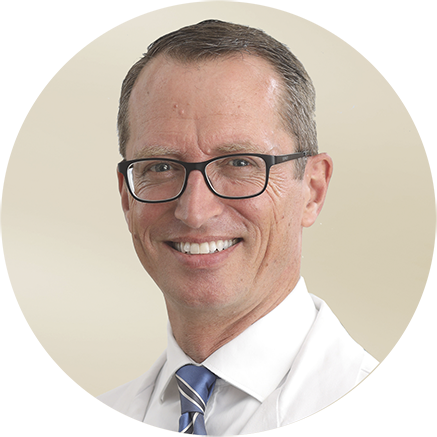
Markus B. Blatz, DMD, PhD
About
Dr. Markus B. Blatz is Professor of Restorative Dentistry, Chairman of the Department of Preventive and Restorative Sciences, and Assistant Dean for Digital Innovation and Professional Development at the University of Pennsylvania School of Dental Medicine in Philadelphia, Pennsylvania, where he founded the Penn Dental Medicine CAD/CAM Ceramic Center and serves as Associate Director of AI and Digital Dentistry at the Center for Innovation and Precision Dentistry. Dr. Blatz graduated from Albert-Ludwigs University in Freiburg, Germany, and was awarded additional Doctorate Degrees, a Postgraduate Certificate in Prosthodontics, and a Professorship from the same University.
Dr. Blatz is co-founder and past President of the International Academy for Adhesive Dentistry (IAAD) and a founding member of the European Academy of Digital Dentistry (EADD). He is a board-certified Diplomat in the German Society for Prosthodontics and Biomaterials (DGPro) and a member and fellow of multiple other professional organizations, including the American Academy of Esthetic Dentistry, the European Academy of Esthetic Dentistry, the International College of Prosthodontists, the American College of Prosthodontists (honorary member), Academy of Osseointegration, and O.K.U. Honor Dental Society.
Dr. Blatz is Editor-in-Chief of Compendium of Continuing Education in Dentistry, Associate Editor of the Journal of Esthetic and Restorative Dentistry and Associate Editor of Quintessence International, Section Editor of the International Journal of Prosthodontics, and serves on the editorial boards of numerous other recognized scientific dental journals. He is coauthor of the international bestseller "evolution – contemporary protocols for anterior single-tooth implants".
Dr. Blatz is the recipient of multiple teaching and research awards and has published and lectured extensively on dental esthetics, restorative materials, and implant dentistry. He was named one of the "World's Top 100 Doctors in Dentistry" and "Most Educational Instagram Account (@profmarkusblatz)" by his peers.
Presentation Topic
The Cantilever Zirconia Resin Bonded Bridge - Where, When, and How
Learning Objectives
Objective
• Understand the concept of cantilever zirconia resin bonded bridges and clinical indications
• Learn about successful resin bonding methods and materials for ZRBFDPs
• Comprehend clinical and laboratory guidelines for long-lasting esthetic ZRBFDPs, from treatment planning to preparation, restoration design and insertion
Presentation Details
Lecture Description
Zirconia has become the material of choice for a variety of indirect all-ceramic restorations ranging from single units to full-mouth reconstructions. While, in the beginning, zirconia was only used as a coping and framework material that had to be veneered with porcelain, current high-translucent and multi-layer options offer excellent optical, physical, and biological properties for a multitude of indications. The zirconia-based resin bonded bridge (ZRBFDP) is a proven, yet widely unknown, minimally invasive treatment option to replace missing anterior teeth when other options are not possible or have to be delayed. For long-term clinical success with ZRBFDPs, a deep understanding of fundamental clinical and laboratory parameters from case selection, abutment tooth preparation, restoration material and design, and, most important, proper resin bonding protocols, is essential. However, the rumor that "you cannot bond zirconia" persists tenaciously despite research compiled over two decades telling us otherwise. The APC zirconia bonding concept is a summary of 20 years of research and provides a simple, yet highly effective method for long-term durable resin bonds to zirconia. In fact, numerous clinical studies have shown that ZRBFDPs, which rely exclusively on adhesive bonds, have extremely high clinical long-term success rates.
This presentation will provide a deeper understanding of ZRBFDPs as a reliable treatment option and offer solutions for cementation and bonding that, based on the latest research, will provide long-term successful outcomes.
